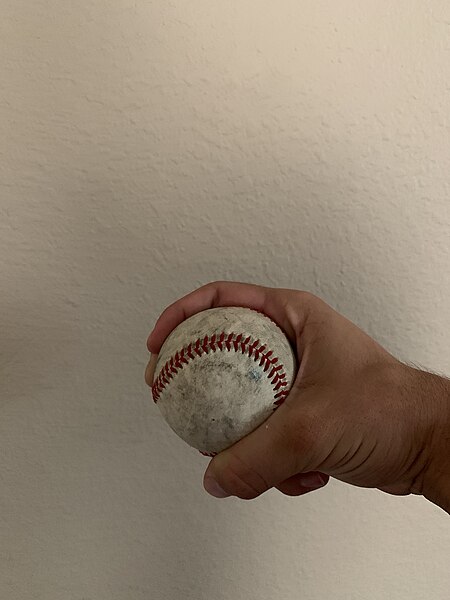An eephus pitch in baseball is a very high-arcing off-speed pitch. The delivery from the pitcher has very low velocity and often catches the hitter off-guard. The eephus pitch is thrown overhand like most pitches, but is characterized by an unusual, high-arcing trajectory. The corresponding slow velocity bears more resemblance to a slow-pitch softball delivery than to a traditional baseball pitch. It is considered a trick pitch because, in comparison to normal baseball pitches, which run from 70 to 100 miles per hour, an eephus pitch appears to move in slow motion at 55 mph (89 km/h) or less, sometimes as low as 35 mph (56 km/h).
This image depicts the path of an eephus pitch thrown by pitcher Rip Sewell in the 1946 MLB All-Star Game, which was hit for a home run by Ted Williams.
In baseball, an off-speed pitch is a pitch thrown at a slower speed than a fastball. Breaking balls and changeups are the two most common types of off-speed pitches. Very slow pitches which require the batter to provide most of the power on contact through bat speed are known as "junk" and include the knuckleball and the Eephus pitch, a sort of extreme changeup. The specific goals of off-speed pitches may vary, but in general they are used to disrupt the batter's timing, thereby lessening his chances of hitting the ball solidly or at all. Virtually all professional pitchers have at least one off-speed pitch in their repertoire. Despite the fact that most of these pitches break in some way, batters are sometimes able to anticipate them due to hints that the pitcher gives, such as changes in arm angle, arm speed, or placement of fingers.
Curveball grip
Curveball grip (side)
Slider grip
Slider grip (side)





